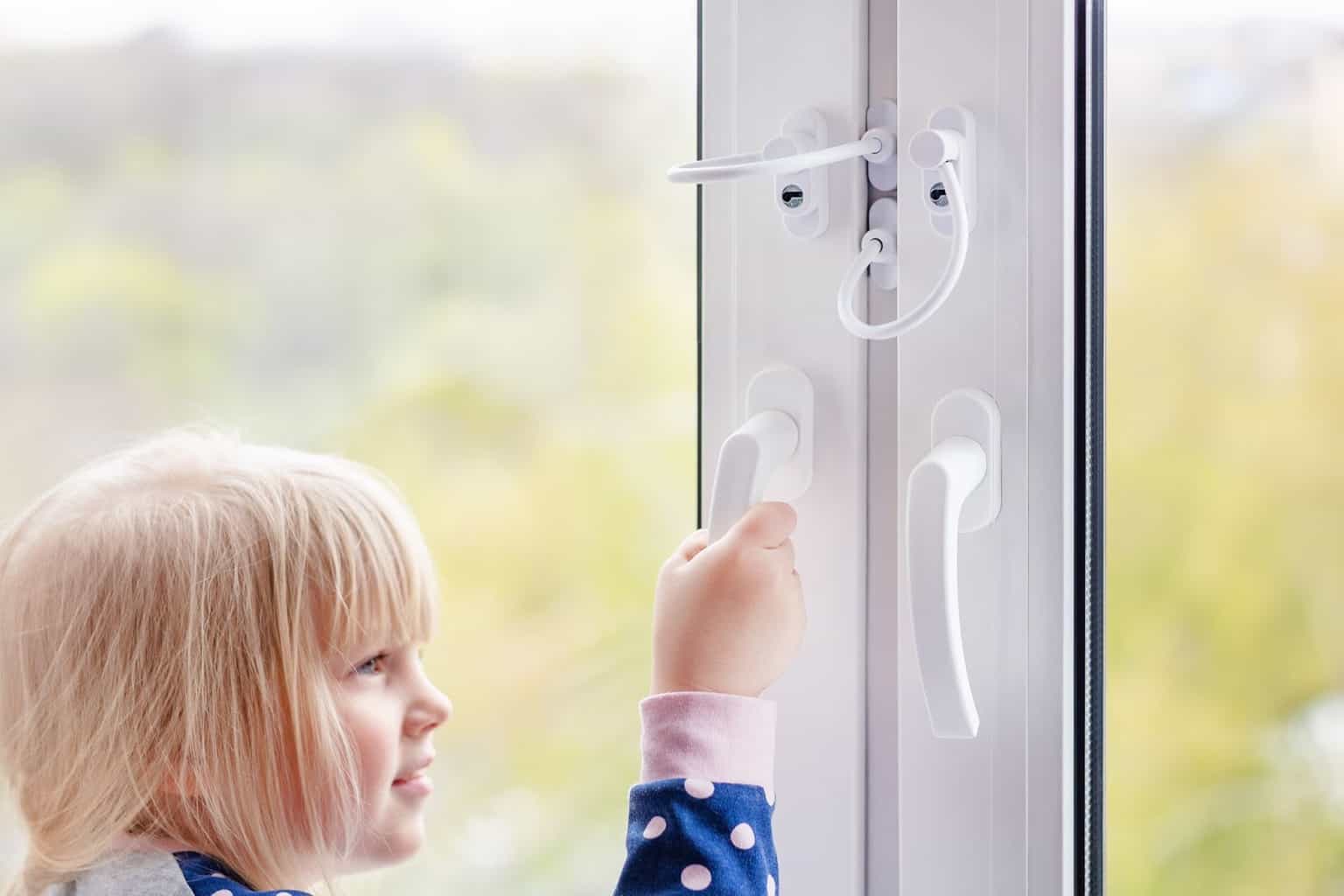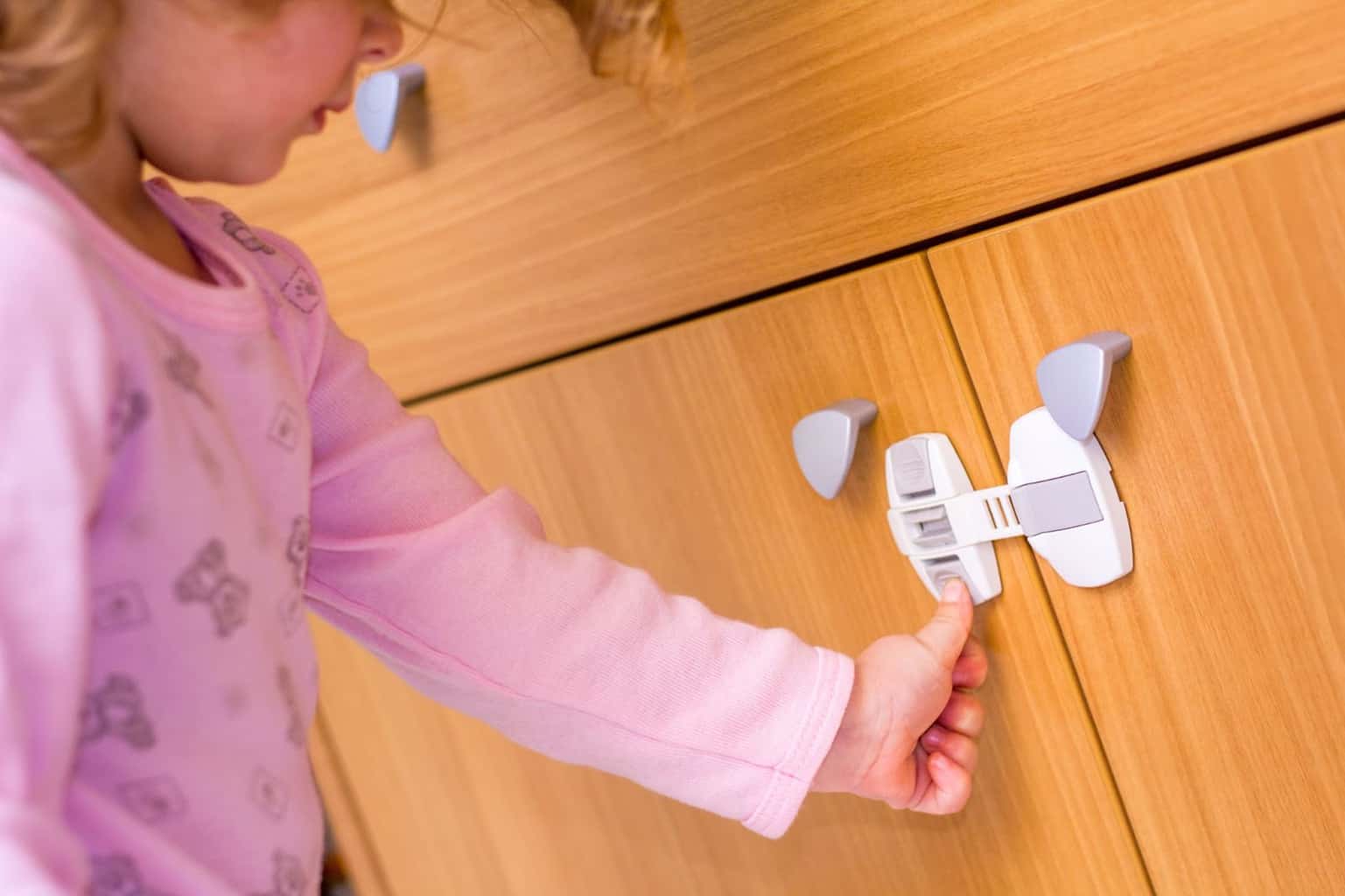Keep Your Child Safe at Home and on the Go

Child-proofing a space typically involves putting away breakable objects, covering sharp corners, and generally making any dangerous products out of sight and out of reach. When trying to make sure your kiddo doesn’t get into cleaning agents and chemicals or experiment with gravity by dropping your nice dishware, adding child safety locks to the cabinets seems like a promising solution. Much like how the rear doors on a car can be locked so a curious child doesn’t try to open the door of the vehicle, child safety locks prevent children from being able to open certain doors, cabinets, or drawers so they cannot access potentially dangerous or harmful items.
There are a couple of key differences between child locks in a car and child locks used within a home, though. In a car, the driver seat typically has a button that will turn the child/rear door locks on, and, when enacted, permits anyone from opening the rear car doors from the inside. Even though they are most commonly used to deter children from opening the door when they’re not supposed to, the function paints with a broad brush and simply makes it so everyone is unable to open the door.
Child locks for drawers and cabinets, however, still allow access to the inside, but only if the person knows how to get around the mechanism. These types of locks rely on the age and dexterity of a child to be relatively low, so they do not understand nor can they perform the required functions to open the drawer or cabinet. For adults, opening the doors should be relatively easy.

When to Use Child Safety Locks
Deciding when to implement child safety locks typically depends on when your child develops the motor skills that would allow them to open doors, pull-on handles, etc combined with when the child is able to move around independently (even for short periods of time!) But, frankly, there isn’t a time that is too early to install them.
The more challenging decision is figuring out when to stop using child safety locks. There is no hard and fast rule about when to turn off the rear door locks in the car or when to uninstall the locks on the cabinets, but the best indication is going to be based on the individual child.
A great starting point would be to identify your child’s overall level of responsibility, trustworthiness, and maturity. With a little focus and time looking at it, would the child be able to figure out how to bypass the lock? Has the child reached a level of maturity and understanding that they explicitly know not to play with cleaning chemicals? If you can answer yes to one or both of these questions, you can probably start taking the locks off.
For things that would still be restricted, like alcohol in a liquor cabinet, consider getting a new lock with a key or code that only you have access to, so your child can’t simply figure out the system and open the door
Where to Install Locks
Now that we’re on the same page about what child safety locks are, why they’re a great option, and when you should start and stop using them, let’s talk about where to place these locks. We’ve mentioned the kitchen a fair bit, so c on cabinet doors and drawers is a must, but barring the refrigerator and dishwasher are smart moves too. If locking everything that opens in your kitchen seems like too much, the places you should definitely lock are where chemicals are stored (think cleaning agents under the sink), objects are breakable (like a dishware cabinet), and where sharp or other dangerous objects are stored (like a drawer with knives or other silverware). Another option is to rearrange your kitchen so these items are stored higher up, so they are out of reach for your children but still easily accessible to you.
Other places to install child safety locks would be doors that lead to rooms you don’t want them entering, medicine cabinets or other places where pills are stored, and perhaps a drawer or part of a desk where sensitive documents and information are stored.
Types of Lock Options
Magnetic
Once installed onto the drawers and cabinets, the doors will remain closed unless you use the magnet “key” to open them. These locks come with an external magnet “key” that is easy to store above a child’s reach on the fridge door or somewhere similar. Simply hover the magnet over the door or drawer you want to open, and the magnet will release the lock inside allowing you to open it.
Electromagnetic
A little pricier than simple magnetic locks, electromagnetic locks can be controlled from your phone, so you don’t need to keep track of the extra magnet “key,” and you don’t need to be physically in the room to unlock them. Electromagnetic locks are also convenient because you can easily turn all the locks on or off with one simple click, so for example, a housesitter could easily access the contents of cabinets without having to bypass the child safety locks each time.
Spring-style
This type of lock attaches to the inside of the door or drawer and allows you to open it about an inch before stopping. The abrupt stopping will deter the child from being able to access what is inside. In order for an adult to open the drawer or door fully, they simply need to press down on the spring-loaded latch to release its hold on the door. These locks are quite common and super easy to install.
External
External cabinet locks are by far the cheapest option with the easiest installation process — no tools or screws needed. Simply slip the locks over the handles/ knobs on the exterior of the doors and it prevents them from being opened. In order to unlock these, a parent just needs to squeeze particular parts of the lock, and it will release.


